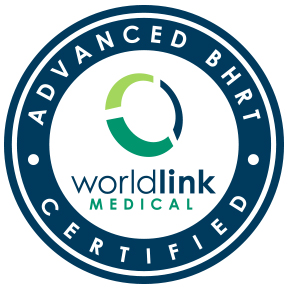Have you ever had major surgery? If you have, you will know that once the anesthesia has worn off, the first thing the doctors and nurses require of you is to “get out of bed” and move! But, “wait a minute,” you cry, “I just had major surgery–let me rest.” Thankfully, however, for you, that request is denied. Otherwise, severe complications in all body systems can occur, as well as death.
Prolonged bedrest effects all body systems, but it especially effects the cardiorespiratory system (heart and lungs are major muscles) and the musculoskeletal system (such as decreased muscle mass and strength, and bone loss). The older an individual is, the more pronounced and serious the consequences.
- Did you know that for every two days of bedrest, the heart rate increases one beat?
- Did you know that in healthy men, the rate of bone loss increases 50 times with bed rest? (Although bone mineral is gradually restored after bed rest, the rate of restoration is 4 times slower than the rate of loss.)
- Did you know that for every week of complete bedrest, muscle strength declines by 10-15%?
- Did you know that within 8 hours of immobilization of a muscle in the shortened position, muscle fibers begin to shorten, limiting full range of motion? (Ever have a hard time getting those legs to move again, after sitting in a movie theatre for just two hours?)
![]()
So what does this have to do with “Sarcopenia,” and WHAT is Sarcopenia?
What is Sarcopenia?
Sarcopenia (pronounced sarko-peen-ya) is the “age-related” loss of muscle. The word comes from the Greek, for “flesh reduction.” It can have the same serious musculoskeletal consequences caused from bedrest. Just like osteoporosis and arthritis, “sarcopenia is a serious degenerative condition that increases ones risks for falls and makes one more vulnerable to injury.”
Less obvious consequences are metabolic effects that result when muscle—the body’s most metabolically active tissue—diminishes. Metabolism is altered when there is less muscle, and many other consequences result, such as obesity, impaired glucose tolerance, and changes in the ability to regulate body temperature. In addition, since muscular contractions help keep bones strong, muscle loss can also weaken bones.
Sarcopenia generally starts to set in around age 45, when muscle mass begins to decline at a rate of about 1 percent per year. As muscle mass begins to decline, so does muscle strength. Studies have revealed that muscle strength declines by approximately 15 percent per decade in the sixties and seventies and about 30 percent thereafter. As strength goes, so does physical functioning—the ability to do chores, take walks, climb stairs, or the accomplishment of other activities. This loss of strength can create a vicious cycle. Since it takes a great deal of physical effort and discomfort to perform daily tasks, one naturally avoids it, which creates even more weakness. Even some activity, no matter how limited, can help maintain muscle mass.
Sarcopenia occurs in people of all fitness levels, however physically inactive adults will see a faster and greater loss of muscle mass than physically active adults. Women, however, face a greater risk than men, because women have less muscle than men, and those who have less muscle to begin with, generally have a greater loss.
Nutrition can also be a factor in the development of sarcopenia if one is not consuming adequate energy intake. Many older individuals may not be consuming enough calories and/or protein, thereby depleting muscle protein to sustain energy requirement.
![]()
Can Sarcopenia Be Treated and/or Prevented?
Along with proper nutrition, a powerful intervention in the prevention and treatment of sarcopenia is resistance training (weight-lifting or strength training). Resistance training works to build muscle by forcing the body to heal the damage to muscle cells that occur with use. When the intensity is high enough, microscopic tears occur in the muscle, which then rebuild protein and make the muscle stronger.
Although it has been known for decades that resistance training increases muscle mass and strength in young adults, many thought that muscle loss in older people was inevitable. However, it is now known that past studies done on older people using weights, did not show a positive response because the studies were not using the correct exercise intensity. Instead, subjects were lifting weights that were too light.
More current studies, using higher intensity workouts have shown that “strength could be doubled in only 12 weeks of training, and that even frail nursing-home residents in their 90’s could build muscle and strength.”
![]()
But I Walk and Swim…. Isn’t that Enough to Prevent Sarcopenia?
When most people start a fitness program, they do an aerobic activity, such as walking or swimming, in order to strengthen their heart muscle. But, before one can walk, they must first be able to get out of a chair and maintain an erect posture and balance while walking, and that requires muscle power.
The American College of Sports Medicine, in its guidelines on exercise and physical activity for older adults, says that aerobic conditioning should follow strength and balance training, which is, unfortunately, the opposite of what is usually done. Aerobic exercise, while it strengthens the heart and lungs, is not sufficient by itself to prevent sarcopenia.
It’s easy to understand why older adults participate in aerobic activity for exercise rather than resistance training. Walking doesn’t require a lot of planning to incorporate it into the day, and swimming or biking are familiar activities. Resistance training, however, is less familiar and it requires one to set aside extra time. However, as little as 40 minutes a session,
or an hour and a half a week, is enough to see significant results.
![]()
Are there other benefits of Resistance Training?
In addition to building muscle, one also builds vigor and self-esteem, which ultimately leads to one staying active and doing things they enjoy. Preserving muscle mass also impacts the ability to withstand disease. The body burns protein faster than usual, when sick, which then causes protein components to be pulled from the muscle to be delivered to the immune system, to help fight the illness. Sarcopenia reduces the amount of protein available to fight disease.
“If you don’t use it, you’ll lose it.” That saying has never been more true than for the use of our “muscles.” When we lose our ability to use our muscles, we lose independence, and quality of life diminishes. Let’s choose to not take for granted our ability to move around, and incorporate resistance training, into our exercise routine. Length of life is insignificant without quality of life!








